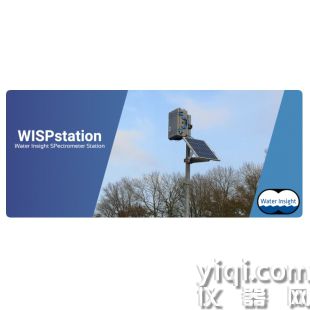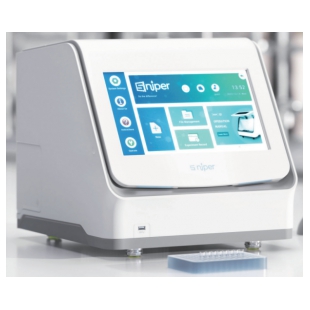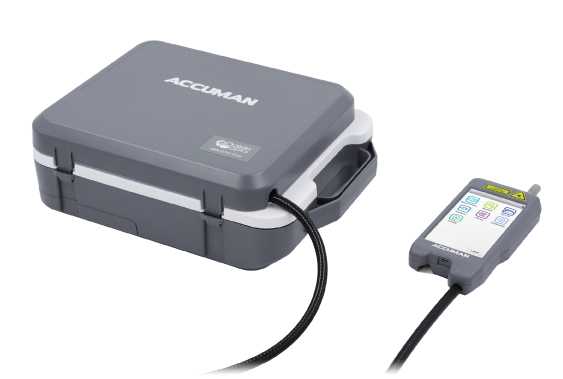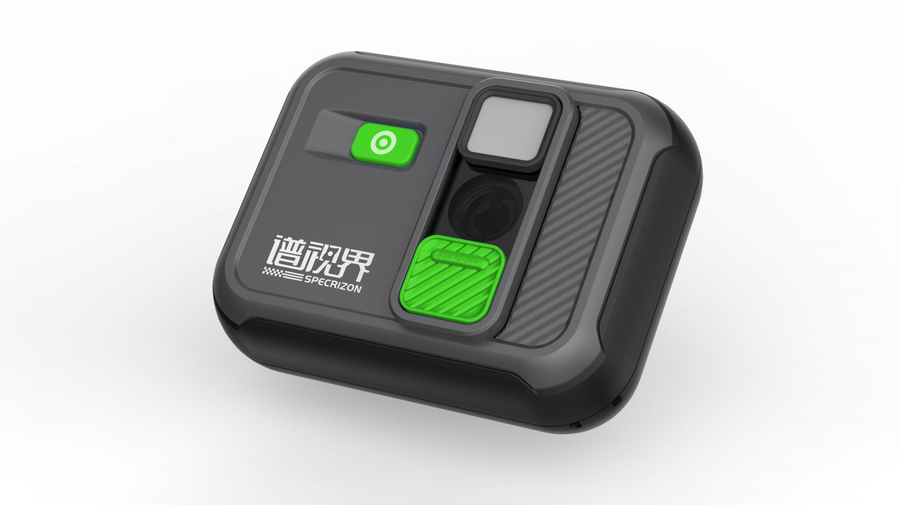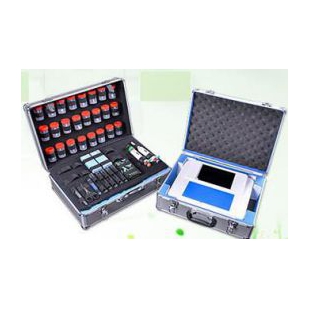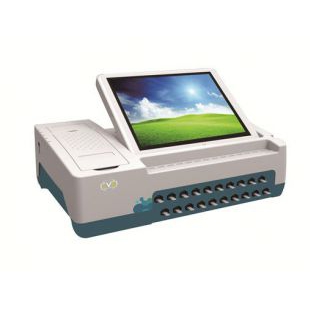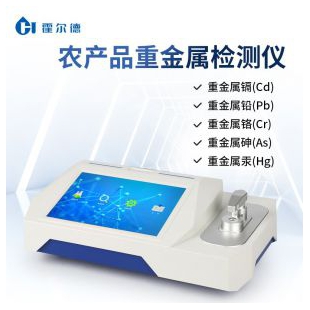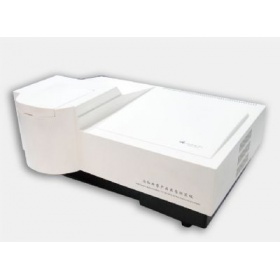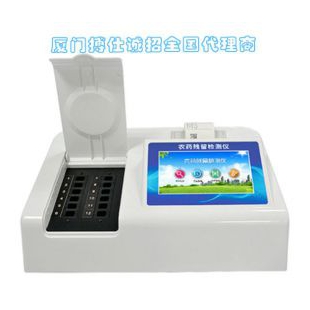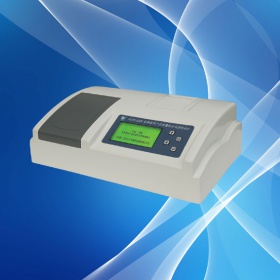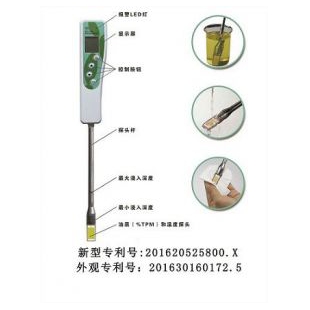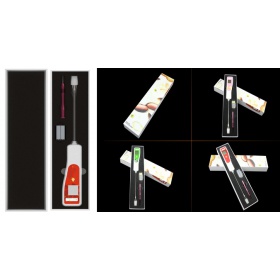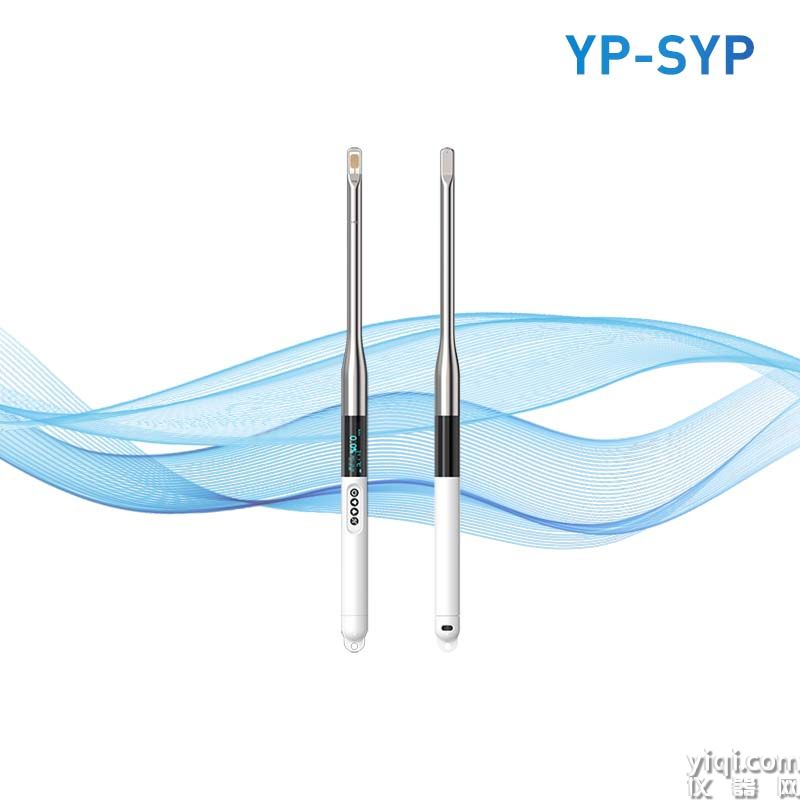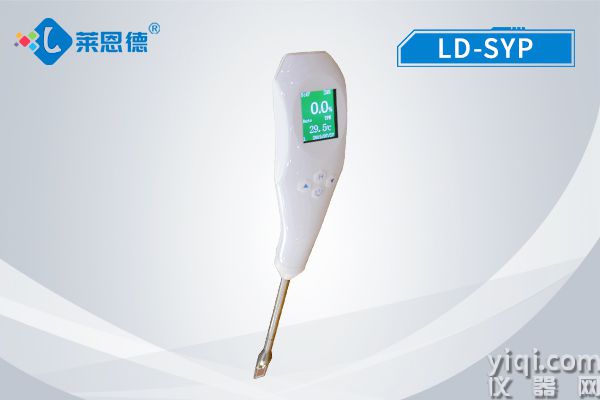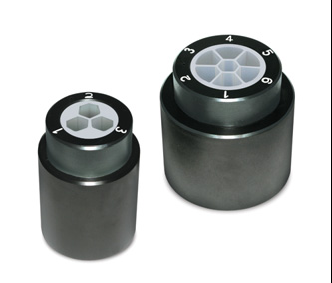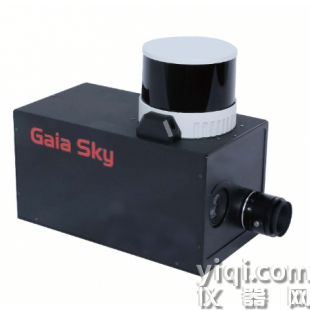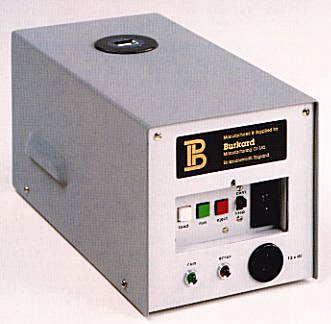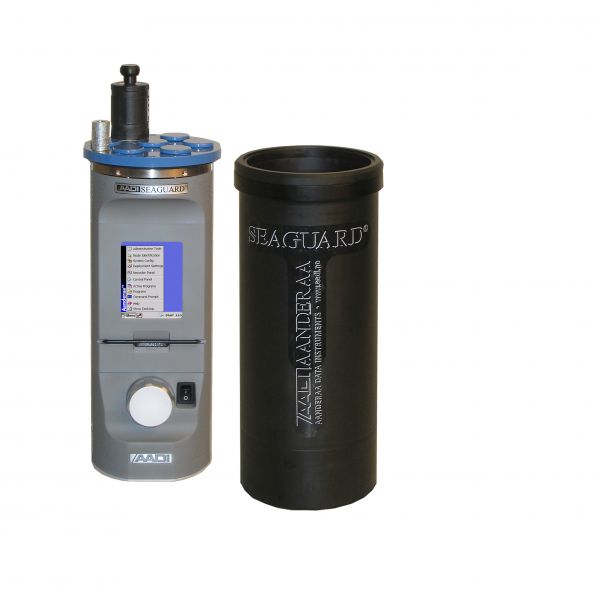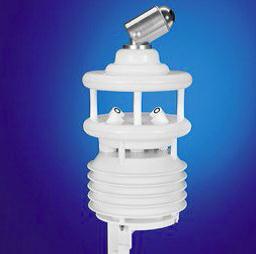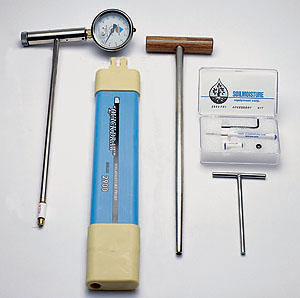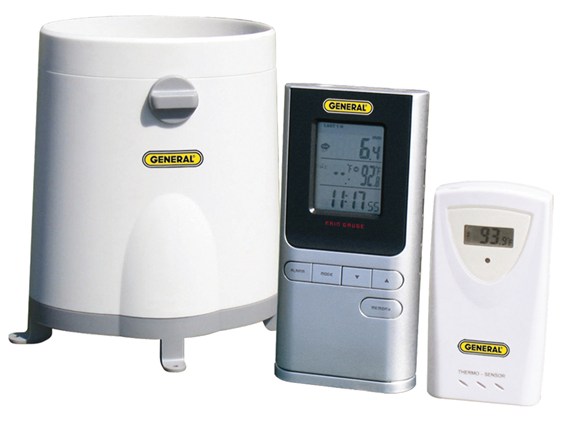-
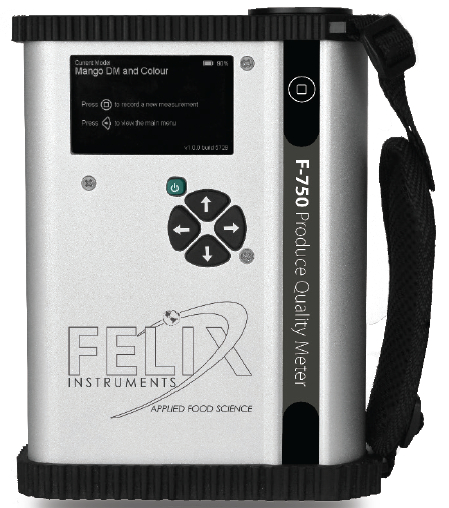
-
农产品品质检测仪 F-750
- 品牌:美国Felix
- 产地:美洲 美国
- 供应商报价:面议
-
上海泽泉科技股份有限公司
 更新时间:2025-04-03 11:42:23
更新时间:2025-04-03 11:42:23 -
销售范围售全国
入驻年限第10年
营业执照已审核
- 同类产品光谱研究(9件)

立即扫码咨询
联系方式:15026947287
联系我们时请说明在仪器网(www.yiqi.com)上看到的!
扫 码 分 享 -
为您推荐
- 1
- 2
- 3
详细介绍

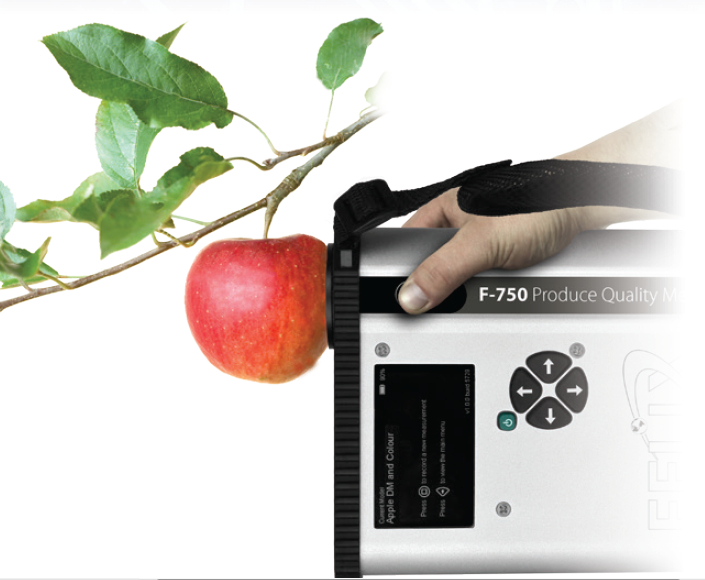
农产品品质检测仪F-750是一款用于分析与农产品品质密切相关的农产品内部及外部特性的测量仪器。
NIR(近红外测定)技术在成套设备中的应用可为我们提供客观量化的质量标准,已在生产中应用多年。我们便携式供电设备把近红外分析技术带给田间种植者,为作物收割前提供更好、更一致的作物成熟度的测定。
F-750可进行物质的定量估算(如叶绿素)、确定多种物质的特性(如成熟度、TSS可溶性固形物、DM糖)并进行定性分析(如风味指数、个人偏好指数)。主要功能
针对农场品的品质进行检测
快速测量(4~6秒)
非破坏测量
带定位系统,便于裁剪制图
野外可视半透显示屏
充电/更换电池
SD卡数据存储
可创建特殊品种的模型
收获前成熟度评估
采后质量检验测量参数
可测量可溶性固形物(糖度)、干物质、内部颜色、外部颜色、可滴定酸等指标
应用领域
主要应用于果实成熟度和甜度相关参数的无损评估,包括田间作物管理和收获期评估、果实储藏、果实催熟及果实零售的各个环节。
主要技术参数
光谱仪:卡尔蔡司MMS-1光谱仪
光谱范围:310-1100 nm
光谱样点大小: 3 nm
光谱分辨率:8-13 nm
光源:钨氙灯
镜头:镀膜增益近红外线镜头
快门:镀金参考标准
显示:光下可见液晶屏
PC接口:USB SD卡
记录每次测量参数:原始数据,反射,吸收,一阶导数吸收,二阶导数吸光度数据
电源:可拆卸3100毫安时锂离子电池
电池寿命:大于1600次
数据存储:可拆卸32GB SD卡
机箱:电镀铝
尺寸:18×12×4.4cm
重量:1.05 kg
工作流程
构建模型
F-750农产品质量测定仪可以对10-200种水果的品质进行测定;
利用可选择性测量方法非破坏性测量每种水果的质量参数(如:利用折射计测定白利糖度);
内置建模软件可结合步骤1和步骤2的测量数据创建新的模型;
F-750可利用新创建的模型对感兴趣参数进行无损估计;
F-750可以使用多种模型创建自定义质量指标,例如:结合受试农产品的糖度、颜色、酸度和干物质量等综合指标可确定受试农产品的食用质量指标。计算测量值请键入文字或网站地址,或者上传文档。
与传统光谱仪(利用光谱波段的比值进行计算)不同,F-750利用使用者或软件选取在310-1100nm光谱范围内的光谱集建立PLS模型进行计算。
软件模型采用非线性迭代偏最小二乘回归(NIPLS)建立权重系数来衡量已知参数与不同波长间的关系。F-750可计算出样品的二阶导数光谱并应用各波长的权重系数获取实际测量图谱。量化的测量精度 (确定测量精度)
F-750结合了所选光谱集与样品光谱间的实际差异,以及预期权重系数,从而为每次测量提供了一个精确的置信度。)
选购指南
主机、说明书、叶夹 箱子和相关配件
基本配置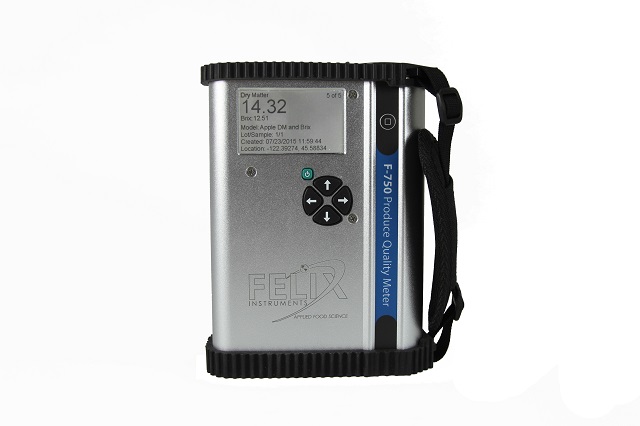
应用实例
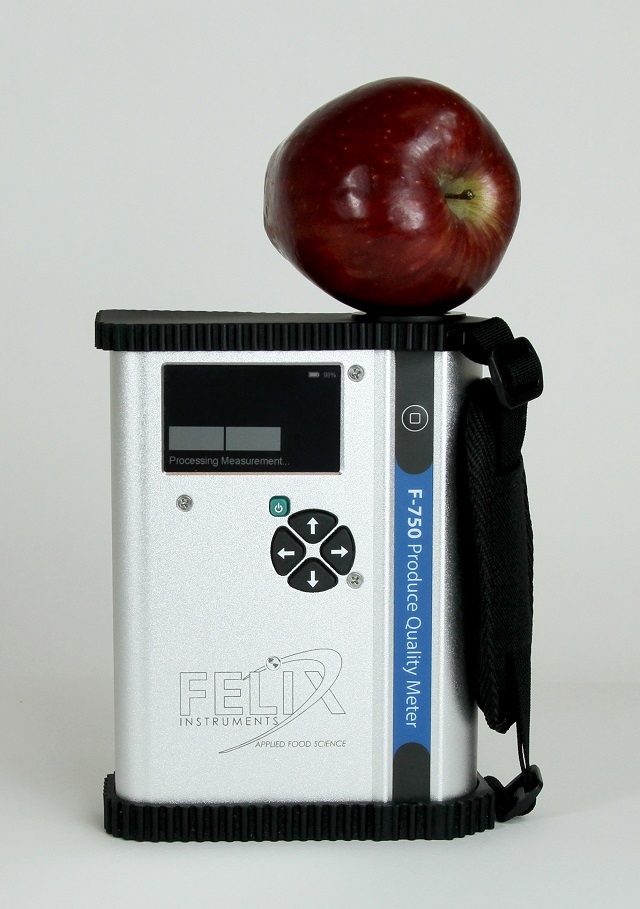
产地:美国Felix
参考文献
原始数据来源:Google Scholar
1. V.A. McGlone, R.B. Jordan, R.J. Seelye, C.J. Clark (2003) Dry-matter – a better predictor of the post-storage soluble solids in apples? Postharvest Biol. Technol., 28, pp. 431–435
2. P. Subedi1, K. Walsh1, and P. Purdy2 (2010) Determination of Optimum Maturity Stages of Mangoes Using Fruit Spectral Signatures, China Int Mango Conf 1-12
3. M. Cecilia Rousseaux, Juan P. Benedetti, Peter S. Searles (2008) Handheld NIR and grape fruit quality. 1-2
4. Kerry B. WalshAC, John A. GuthrieB and Justin W BurneyA (2000) Aust. J Application of commercially available, lowcost,miniaturised NIR spectrometers to the assessment of the sugar content of intact fruit. Plant Physiol, 27: 1175-1186
5. P.P. Subedi a, K.B. Walsh a, G. Owensb (2007) Prediction of mango eating quality at harvest using short-wavenear infrared spectrometry. Postharvest Biology and Technology, 43: 326–334
6. Kerry B.Walsh1, Robert L. Long1 and Simon G. Middelton2 (2007) Use of near infra-red spectroscopy in evaluation of source-sink manipulation to increase the soluble sugar content of stonefruit. Journal of Horticultural Science & Biotechnology, (82:2) 316–322
7. Downey, G. (1996) measured NIR interactance (700–1100) spectra from six selected sites on the dorsal and ventral surfaces of each fish side on farmed salmon, resulting in 294 spectra from different sites The measurements were done through skin and scales by an unspecified fiber-optic interactance probe. Referencechemical values of fat and moisture were determined from excised flesh from the different NIR measurement sites. Fat ranges for the sites were 2.3–23.0% and moisture 57.9–74.7%. Spectral measurements on the dorsal surface gave lowest prediction errors (bias corrected) for fat 2.0% and moisture 1.45%.” Non-invasive and non-destructive percutanous analysis of farmed salmon flesh by near infrared spectroscopy. Food Chem. 55:305–311.
8. Cozzolino, D., Parker, M., Dambergs, R. G., Herderich, M. and Gishen, M. (2006) AIn the Vis region (400–700 nm) the spectra with very low absorption were those from Day 0 of the fermentations, that is, grape must before fermentation commenced. Samples taken after Day 0 showed a marked increase in anthocyanin absorption around 540 nm, thus demonstrating the extraction of these phenolic pigments from grape skins into the wine as the fermentaition proceeded.Chemometrics and visible-near infrared spectroscopic monitoring of red wine fermentation in a pilot scale. Biotechnol.Bioeng., 95: 1101–1107. doi: 10.1002/bit.21067
9. Phul P. Subedi a , Kerry B. Walsh a , and David. W. Hopkins b (2012) Assessment of titratable acidity in fruit using short wave near infrared spectroscopy. Part B: intact fruit studies. Near Infrared Spectrosc., (20) 459-463

